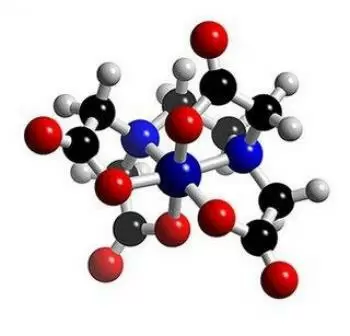
Molecule definition in chemistry: A molecule is an electrically neutral entity composed of two or more atoms. The atoms can be of the same element or not and are joined by covalent chemical bonds. Molecules are formed by atoms sharing among them the electrons of their outer shell of electrons.
Usually, molecules appear interacting with each other except for rarefied gases and noble gases. In this way, we can find them in crystal lattices or with intense interactions. The most relevant forces interacting between molecules are the Van der Waals forces and hydrogen bonds.
In organic chemistry and biochemistry, the concept of a molecule sometimes also identifies polyatomic ions. On the other hand, the kinetic theory of gases is often used for each gas particle.
A molecule can be made up of multiple atoms of a single chemical element or atoms of different elements. Families of molecules made up of the same atoms arranged differently in space are called isomers, and the arrangement affects the substance's physical properties.
What are giant and discrete molecules?
We can classify molecules into two types depending on how they are formed:
-
Discrete molecules: Molecules can be made up of a well-defined number of atoms held together by covalent atom bonds.
-
Giant molecules: These are large molecular chains that are also known as polymers. These molecular structures extend indefinitely in space.
What is the energy contained in molecules?
Molecular structures possess energy manifested in kinetic energy (it can be rotational or vibrational) and electronic energy.
The total energy of the molecules depends on the temperature. As the temperature increases, the vibrational movements of the internal atoms increase. When the temperature is high enough, the vibrations are of such amplitude that the molecules dissociate into their component atoms.
Although molecules are electrically neutral, molecules are made up of atoms (electrons, protons, and neutrons), that is, electrically charged particles.
Molecule motion
In the case of gases, the molecules are animated at room temperature with rapid translation and rotation movements. In the case of molecular solids and liquids, there are primarily oscillations around equilibrium positions.
The atoms that make up the molecules are in defined positions, although there are vibrating particles inside the molecules. This way, discrete molecules are shaped, and you can talk about distances and link angles. However, these distances and these angles are not fixed.
Models to represent molecules
The number of chemical elements discovered and represented in the periodic table is 116. However, there are two million identified chemical compounds.
For this reason, we need to define their most valuable chemical properties. These properties include their bonds' energy, reactivity, lengths, angles, and dielectric moment, in addition to molecular geometry.
Molecule structures can be illustrated with many models.
-
The Lewis structure is the oldest model to represent a molecular structure. A Lewis diagram shows the bonds of a molecular system by the need to obtain a noble gas electron configuration for each atom.
-
The valence bond molecular model considers the overlapping atomic orbitals of different atoms. This theory is complemented by the introduction of orbital hybridization, which allows for explaining the spatial configurations of molecules.
-
According to the molecular orbital model, atomic orbitals bond to form molecular orbitals shared by the two bonding atoms. The electrons located in the orbitals belong to the nuclei of both atoms.
Molecule examples
Some examples of essential molecules are:
-
A water molecule (H2O) is an essential compound for life. Water (H2O) is composed of two hydrogen atoms combined with one oxygen.
-
Carbon dioxide (CO2) comprises one carbon atom, and two oxygen atoms joined by covalent bonds. This compound is related to the greenhouse effect.
-
Methane (CH4) is an organic molecule composed of carbon and hydrogen. It is the main compound of natural gas.
-
Dioxygen (O2) is a homonuclear diatomic molecule consisting of two single atoms of oxygen atoms. It is also sometimes known simply as the oxygen molecule. There is another variety made up of three atoms: O3, called ozone. Ozone is found abundantly in the Earth's atmosphere.
-
Sodium chloride (NaCl), table salt, is one of the salts responsible for the ocean's salinity and many organisms' extracellular fluid.
-
Uranium dioxide ( UO2) is a black, radioactive, crystalline powder chemical compound that occurs naturally in the mineral uraninite. It is used in nuclear fuel rods in nuclear reactors.